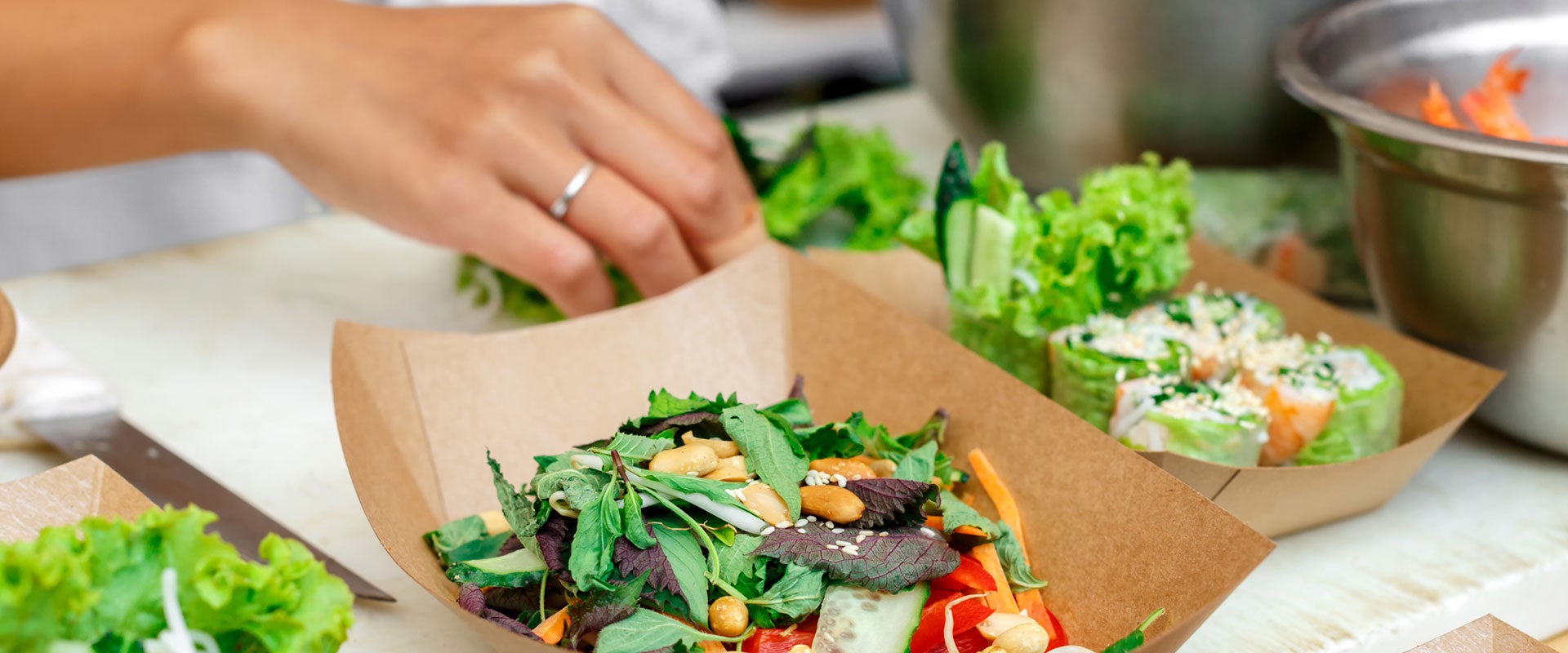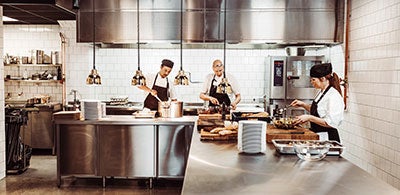
How Foodservice Operators Are Finding Opportunities To Fuel Growth
- Volume XXII, Issue 14
- Executive Insights

Around 240 U.S. foodservice operators took our 2019/2020 survey online. Our study is conducted every three years to track shifting sentiment across the foodservice industry.
The proliferation of digital-based delivery providers and evolving consumer tastes is creating an overcrowded and competitive marketplace for operators.
Overall, foodservice operators are optimistic about the future of industry growth, but less so compared to respondents in our 2017 and 2014 studies.
Operators are employing various strategies to remain competitive, including developing signature offerings, utilizing digital platforms and outsourcing to third-party delivery services. Growth, therefore, is projected to continue for the foreseeable future.
Foodservice has been a bright spot in the U.S. economy for more than a dozen years, propelled by steady growth. But as the menu choices that consumers demand continue to evolve and digital-based delivery provides consumers with an ever-widening array of vendor choices at the click of a button, foodservice operators’ expectations for growth have begun to recede.
In this Executive Insights, we highlight key findings from L.E.K. Consulting’s 2019/2020 U.S. Foodservice Operators Study that make clear how operators can best compete — and succeed — in this increasingly challenging environment.
According to our latest study, foodservice operators remain optimistic about the future of food industry growth, but less so compared to respondents in our 2017 and 2014 studies. Whereas 78% of the operators we surveyed in 2017 were forecasting the industry to grow over the subsequent three years — a slight uptick from the 76% of operators who expected continued industry expansion back in 2014 — that number fell to 56% among this year’s survey respondents (see Figure 1).
As in prior years, operators remain primarily focused on reducing the cost of both food and labor. Meanwhile, rapidly changing consumer preferences have them constantly working to diversify their menu offerings, and an already overcrowded online ordering and delivery market has made it harder to compete in this area.
1. Rising food and labor costs. Rising food costs from suppliers are seen as the No. 1 barrier to growth between now and 2022-23, with 35% of our survey respondents putting this barrier at the top of the list (see Figure 2). Operators believe that the cost of food will rise approximately 3%, surpassing the 2.7% rise they expected in 2017. Meanwhile, due to a combination of cost-of-living increases and minimum wage laws, 26% of the operators we surveyed said higher labor costs were their primary concern. Such a worry is far from unfounded: Between 2015 and 2018, wages in the U.S. foodservice industry grew 5.3% while the median rise of wages overall stood at just 2.5%. Minimum wage laws being implemented across the country will further exacerbate this issue.
2. Changing consumer tastes. Consumers are increasingly demanding healthier foods, particularly those with claims such as “no artificial ingredients,” “no preservatives,” “all natural” and “locally produced.” Plant-based alternatives in particular are in high demand. But the shifts in consumer preferences can be hard to keep up with.
3. A crowded field. The rise of online ordering and delivery services has been a boon for consumers, in terms of both choice and convenience, and for operators, as it has greatly widened the pool of potential customers. But not all operators have maximized the opportunity yet, and the delivery market is already overcrowded and highly competitive as key players vie for dominance.
The challenges that foodservice operators face have shifted somewhat over the past two to three years. While food and labor costs remain issues, retail competition and the difficulties of complying with food safety standards are no longer top of mind, replaced by changing consumer tastes and an already overcrowded delivery market. But there are still a number of ways to grow sales and cut costs and at the same time maintain or even increase market share.
1. Develop signature offerings. Operators are continuing to respond to consumer demands for healthier foods by implementing a host of menu changes. Meat substitutes, along with organic and nutrient-rich options, are the most common additions, with the number of operators offering those options up 6%, 4% and 4%, respectively, from 2017 (see Figure 3).
The percentage of meat products they are replacing with branded, plant-based meat products is also forecast to continue rising, to 37% in three years vs. 34% today and 33% in 2017 (see Figure 4).
2. Outsource to third-party or operator-managed delivery services. In an effort to acquire new customers while retaining existing ones, operators predominantly use third-party aggregators and delivery apps, believing that the greater customer access such solutions provide outweighs both the cost savings and direct communication they get from handling orders and delivery themselves. Whether the delivery is being outsourced or handled in-house, 74% of all operators — in particular commercial establishments — now offer online ordering, which can yield higher order volumes and revenues. Over the next three years, some 50% of our survey respondents say they expect to take steps toward increasing their delivery offerings.
3. Employ digital tools. Online ordering and delivery is just one set of digital tools that operators can use to attract and retain customers by increasing their purchasing convenience; social media is also proving to be invaluable. Facebook remains the social media tool of choice, but it has fallen (to 57% of operators, down 7% since 2017) along with use of company websites (to 43% of operators, down 11% since 2017), while the use of Instagram has surged (to 34% of operators, up 6% since 2017). Twitter also remains a potent force, as proven by Popeyes’ use of the platform to needle rivals and increase demand for its wildly popular chicken sandwich.
4. Use pre-prepared and private label products. Purchasing pre-prepared foods gives operators a way to offer comparable quality at a lower price, in terms of both food and labor — 41% of our survey respondents say the cost of labor is too high to prepare food in-house. And as the quality of private label foods rises while consumers remain largely unaware of how these foods differ from branded products, operators are also increasingly shifting to private label alternatives, particularly for commodity items.
5. Reduce labor, limit working hours and leverage automation. To further combat higher labor costs — especially as the possibility of a recession continues to loom — operators are reducing both the number of full-time employees and the number of hours all employees are asked to work (43% and 35% of the operators we surveyed, respectively). They’re also using automation (20%) wherever possible.
Another tactic they’re using to lower labor costs is the purchase of pre-prepared food (see Figure 5), by finding food with a level of quality comparable to that prepared in-house. As such, the pre-prepared food category is expected to grow 17% year over year, surging from 7% growth in 2017.
Although the sentiment among foodservice operators is somewhat less optimistic than in previous years, they are proactively taking steps to counter the headwinds they face. From expanding their menu options while reducing costs to beefing up their delivery options with the help of digital tools, foodservice operators are well poised to continue growing for the foreseeable future.
Endnotes
1Survey question: Overall food service industry revenue has grown at 4.6% per year since 2004 (including price increases of 2.5% per year). What growth do you expect per year going forward (including price increases)?
2Survey question: Which of the following are the most significant growth barriers facing your company over the next three years?
3Survey question: What menu changes have you needed to make due to recent health trends over the past three years?
4Survey question: What percentage of meat products are you replacing with branded, plant-based meat?
5Survey questions: How have your food preparation practices changed over the past three years? Why are you purchasing more pre-prepared foods?
